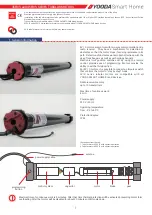
Electrical connection
6.5 Connecting the temperature sensor/anti-condensation heater
1LE5, 1PC4 shaft height 315/355
68
Operating Instructions, 10/2020, A5E41454666A
Internal ground terminal
When making connections, ensure the following:
•
Ensure that the connecting surface is bare and is protected against corrosion using a
suitable substance, e.g. acid-free Vaseline.
•
Arrange the flat washer and spring washer under the bolt head.
•
Locate the cable lug under the clamping bracket.
•
Use the terminals designated for the grounding conductor in the terminal box.
•
Observe the tightening torque (Page 126) for the locking screw.
External ground terminal
When making connections, ensure the following:
•
Ensure that the connecting surface is bare and is protected against corrosion using a
suitable substance, e.g. acid-free Vaseline.
•
Position the cable lug between the contact bracket and the grounding bracket; do not
remove the contact bracket pressed into the enclosure!
•
Arrange the flat washer and spring washer under the bolt head.
•
Use the marked connection location for the grounding conductor on the stator housing.
•
Observe the tightening torque (Page 126) for the locking screw.
6.5
Connecting the temperature sensor/anti-condensation heater
WARNING
Hazard due to electric shock
The installation of the temperature sensors for the winding monitoring with respect to the
winding is implemented according to the requirements for basic insulation. The
temperature sensor connections are located in terminal boxes, safe to touch, and have no
protective separation. This is the reason that in the case of a fault, a hazardous voltage can
be present at the measuring sensor cable. When touched, this can result in death, severe
bodily injury and material damage.
•
When connecting the temperature sensor to external temperature monitoring devices,
when required, apply additional measures to fully comply with the requirements set out
in IEC 60664-1 or IEC 61800-5-1 "Hazard due to electric shock".
In addition to the current-dependent overload protective device located in the connecting
cables, use the optionally available integrated devices and equipment, for example,
temperature sensors, anti-condensation heating.
















































